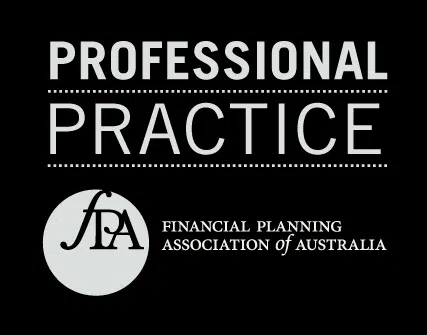It’s happening quietly, but you might have already felt it. Maybe your business loan declined when you expected a renewal. Maybe your banker was replaced by a call centre. Or perhaps your perfectly healthy business was told you no longer “fit policy,” even though nothing about your operation has changed.
Across Australia, banks are tightening their grip on SME lending. Strong businesses, the kind that employ people and pay their bills on time, are suddenly being declined or having limits cut. And here’s the uncomfortable truth: we know this because it’s happened to us too.
What’s really happening.
A recent SmartCompany article highlighted the lending squeeze facing Australian small businesses. Banks are reassessing not just new loans, but existing facilities, and many businesses are seeing their business loan declined without warning. Businesses with older equipment, irregular BAS lodgements, or trading structures that fall outside the textbook ‘low risk’ profile are being declined, even with strong cash flow.
The article shares the story of a transport operator in regional Queensland with 10 trucks and a flawless repayment history. His bank reduced his limit without warning because one truck was over 10 years old. Nothing about his business had changed. Only the rules had.
And here’s where it gets personal. Collins SBA experienced exactly this. We’ve had our banking through NAB, then Macquarie, and recently refinanced through Westpac. The only reason we got any attention from Westpac was through a referral relationship with a much larger financial group. Our debt sits under that magic $3 million threshold, which means we’d otherwise be a nobody. Even when we were with CBA a few years ago, we got transferred from the business bankers to a call centre.
We’re a medium-sized business in Hobart. We’re a referral source for banks. And we’re not immune to it.
The $3 million divide.
Our finance partner, Tom McMeekin, who leads the Tasmanian arm of Australian Finance Partners, has spent more than 20 years in commercial and corporate banking. He’s structured finance deals for manufacturers, property developers, and family businesses alike, and he knows exactly how to make banking relationships work.
As Tom put it when responding to the SmartCompany article: “It comes back to one thing, and that is how the SME is being represented to the bank.”
According to Tom, the issues highlighted in the article aren’t new. What’s changed is that banks simply aren’t resourced to have conversations with the vast majority of their clients anymore. Most business banks used to start relationship management at $500,000 in commercial borrowings. That figure is now $3 million and up, depending on the bank.
The result? Clients below this lending threshold are being pushed to small-business call centres where they’re either mass-managed, which means purely reactive banking, or handled by business bankers with 500-plus clients. Again, reactive. And these bankers, Tom notes, are often incredibly inexperienced.
In Tasmania, NAB has small business bankers here, ANZ has a small business BDM, Westpac has just appointed one, and with CBA, you’re dealing with Albury in that sub $3 million space. All of them are dealing with a mass of clients.
When a client looks to do something, but the bank hasn’t kept pace and hasn’t needed to deal with them for a few years, there may be a compliance issue. The path for bankers in this space is often one of least resistance. So the ‘old policy’ line comes out because it’s easier to move to the next complying deal.
Where algorithms replace understanding.
Business lending used to rely on relationships and conversation. Now, algorithms make the call. Automation might be efficient, but it strips away the human understanding that once underpinned credit decisions.
A small manufacturer with seasonal revenue or a construction firm that wins project-based work looks risky on paper, even when it’s financially strong. Computer models can’t see what a good broker or banker can: a loyal customer base, a signed tender, or an owner who has personally guaranteed every asset they own. And when the numbers don’t tick the right boxes, a business loan declined becomes the default response, no questions asked.
The shift from relationship banking to risk automation has made it harder for the real economy, the small businesses that employ over seven million Australians, to access capital when they need it most.
This is often when a business loan gets declined, not because of financial weakness, but because the system can’t recognise real-world strength.
All banks will waive policy if you know how.
Here’s what most business owners don’t realise. As Tom explains, all banks will waive credit lending policies if there’s an appropriate mitigant. They won’t waive legislative or regulatory-driven ones, but issues like the 10-year rule on capital assets cited in the article can be worked around.
The key is representation. How your business is presented to the bank, in a manner that the bank will understand. And then, some belligerence may be required to push the outcome. Hence, being networked up is quite critical so you can push beyond the banker if needed.
Tom’s view is that banks have well and truly opened the door to outsourcing the sub-$3 million space to commercial brokers. And perhaps that’s a deliberate strategy over the full-time employee cost versus return.
Part of the game is knowing which bank fits your business and your industry, particularly for clients in this space. Above $3 million, you get locally based relationship managers with more authority and experience. But even then, it’s about representing the risk effectively, mitigating any policy outliers, and making sure clients represent themselves in the best possible light.
It comes down to team.
Tom’s experience working with businesses through these lending challenges always comes back to one word: team. The advisers around the client, the forecasting they can complete, appropriate legal structures being in place, hygiene factors like tax being up to date. If there’s a gap, getting it funded via working capital lines before it’s in arrears, using forecasts to stay ahead.
And finally, representing the credit in the best light. For all commercial deals, Tom and his team essentially write the bankers’ credit paper for them, covering the risk, policies, and analysing the financials. They don’t just let the bankers run with it. The aim is to control the narrative in the credit teams.
As Tom puts it: “With the best of intent, garbage in from the banker will get a garbage result out.”
The change is really down to tiering, where you have a lot of auto-decisioning that requires intervention. Bankers are simply moving to the low-hanging fruit, given the volumes of clients they’re handling in the sub $3 million space, rather than fighting like they might have once done when portfolio sizing was smaller.
For clarity’s sake.
This is where having advisers who understand your business, and who have the right specialists in their corner, makes all the difference. Firstly, be proactive, especially in this lending environment, as it’s easier to influence a decision than change one. If you’ve had a business loan declined due to policy, there’s usually a way forward. But it requires someone who knows how to navigate the system, who understands what the banks are actually looking for, and who can represent your business in a way that gets results.
That’s where our advice philosophies come in: Cashflow, Contingency, and Wealth Planning. These aren’t just abstract ideas. They’re the foundation we use to help business owners build financial clarity, protect against the unexpected, and take confident steps toward long-term freedom – even when the banks say no.
The policy nuances have always been there, and they’re almost cyclical. But in a credit sense, as long as you’re representing the why effectively, banks generally are trying to lend money. There’s nothing new to cycle tightening. What’s different is making sure you understand what the banks are looking for, and that information isn’t coming from the banks themselves, like it once did.
At Collins SBA, we’ve built relationships with specialists like Tom who bring deep expertise in areas we don’t claim to have. It’s what we call our whole of team approach. When a client hits a funding roadblock or needs to structure their finances in a way that actually serves their growth, we bring in the right people who know how to make it happen.
Because clarity, confidence and control in your business finances shouldn’t depend on which call centre you get through to. It should come from having a team in your corner who’ll push beyond the first no, who understand your industry, and who’ll represent your story in a way that opens doors.
Take control, then freedom.
—
Want to create a business that gives you genuine freedom? We help business owners gain the clarity, confidence and control to live their best life. Contact Andrew, Advisor and Executive Director, via apearce@collinssba.com.au to find out more.





















